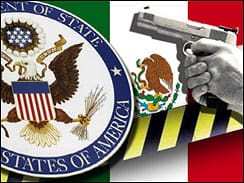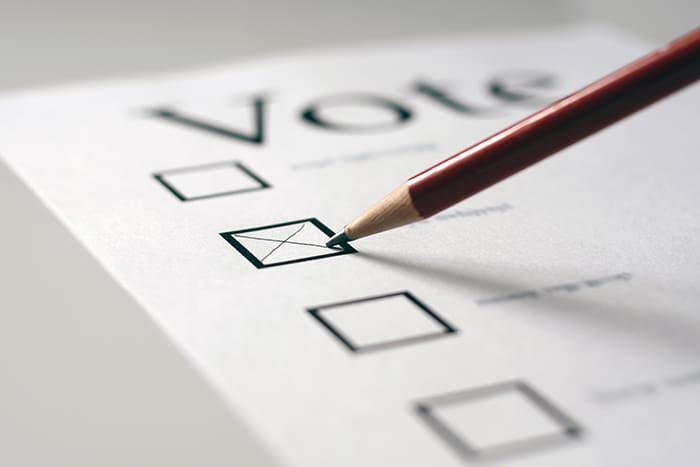Yesterday’s Washington Post reported that the treaty known as the Inter-American Convention Against Illicit Manufacturing of and Trafficking in Firearms (CIFTA) is stuck in development hell. The paper attributes the lack of progress on CIFTA to a lack of resolve by the Obama Administration. Needless to say, the WaPo also saw the cold, dead (non-gun prying) hand of NRA in the agreement’s limbo dance. Personally, I couldn’t make head nor tails of CIFTA. So I turned to our legal eagle Chris Dumm. While Chris awaits a trigger-modded Chiappa Rhino, he’s sifted through CIFTA for our Armed Intelligentsia. What he found leaves us happy that it’s dead in the water.
PREAMBLE:
There are some sections in the preamble where I think I detect the handwriting of the NRA, particularly in its respect for national constitutional norms and for lawful sporting uses of firearms. Near the end of the preamble section, among other bland recitations we find the following:
RECOGNIZING that states have developed different cultural and historical uses for firearms, and that the purpose of enhancing international cooperation to eradicate illicit transnational trafficking in firearms is not intended to discourage or diminish lawful leisure or recreational activities such as travel or tourism for sport shooting, hunting, and other forms of lawful ownership and use recognized by the States Parties;
RECALLING that States Parties have their respective domestic laws and regulations in the areas of firearms, ammunition, explosives, and other related materials, and recognizing that this Convention does not commit States Parties to enact legislation or regulations pertaining to firearms ownership, possession, or trade of a wholly domestic character, and recognizing that States Parties will apply their respective laws and regulations in a manner consistent with this Convention;
(etc…)
So, “lawful leisure or recreational activities” involving firearms are (ostensibly) not intended to be discouraged or diminished by this Convention, but the individual possession of firearms for self-defense is NOT protected specifically.
Depending on how the syntax of this recitation is parsed out, self-defense might be protected under this Convention (where it is now legal by reference to “other forms of lawful ownership and use recognized by the States Parties”). Since our gun rights are enshrined in the Constitution, and self-defense is as black-letter as a law can be, maybe self-defense is safe, so to speak.
Or maybe not. Depending on how the syntax is parsed out, self-defense might not be protected after all. Due to the tortured grammar of the “RECOGNIZING” clause above, a court (or a future Congress or President) could decide on purely grammatical grounds that self-defense is not a ‘leisure or recreational activity’ and that the Convention thus does not protect it.
That clause is so poorly written, it makes the fine print on a mortgage application seem elegant in its forthrightness. Perhaps it was the best the NRA could do under the circumstances.
ARTICLE I
DEFINITIONS:
Moving on to the ‘Definitions’ in Article I, we see that “illicit manufacturing” refers to the manufacture or assembly of firearms OR AMMUNITION without a license from your government. This could be a big problem, because by this definition there are potentially several million “illicit manufacturers” in the United States.
I am potentially one of them. Why haven’t the Black Helicopters descended on my loading bench? Possibly because the trade in ammunition components in the U.S. is purely a domestic one, and possibly because such handloading is a ‘leisure’ activity which the Convention does not purport to disparage. In any event, hand-loaded American ammunition never leaves the country in any traceable quantity. More on this later.
Now there’s the potentially troubling definition of “Other related materials.” It includes the logical items (parts, components or replacement parts) and also includes “an accessory which can be attached to a firearm.” Like slings, or scopes, or flashlights, or Picatinny rail sections. Or coin batteries? Lens cleaning cloths? IPods?
If you Google for it, you’ll find a picture of just about anything attached to somebody’s AR-15. This makes just about anything potentially “other related materials” ripe for regulation.
But how is all this vague and over-inclusive language applied? The member states are required to pass national laws to enforce the Convention through criminal penalties.
ARTICLE IV
LEGISLATIVE MEASURES
1. States Parties that have not yet done so shall adopt the necessary legislative or other measures to establish as criminal offenses under their domestic law the illicit manufacturing of and trafficking in firearms, ammunition, explosives, and other related materials.
Unless I’m missing something, this sounds like a mandate to prohibit the individual assembly of ammunition components, and this spells trouble. Big trouble, unless another one of the recitations quoted above is read to protect handloading as a “form of lawful ownership and use” recognized in the United States.
And it clearly is, since it’s an industry with tens (or hundreds) of millions of dollars a year in domestic commerce. There are perhaps five million handloaders in the United States. (M.L. McPherson: Ammo Supply 101, Supply and Demand, National Association for Gun Rights (2009))
There is an entire literature devoted to the technical aspects of hand-loading ammunition. American hobbyists have assembled their own ammunition for decades for hunting and sporting uses, and the hand-loaded ammunition has absolutely no connection to criminal enterprises or violence of any kind.
ARTICLE V
MARKING OF FIREARMS
1. For the purposes of identification and tracing of the firearms referred to in Article I.3.a, States Parties shall:
a. require, at the time of manufacture, appropriate markings of the name of manufacturer, place of manufacture, and serial number;
b. require appropriate markings on imported firearms permitting the identification of the importer’s name and address; and
c. require appropriate markings on any firearms confiscated or forfeited pursuant to Article VII.1 that are retained for official use. 2. The firearms referred to in Article I.3.b should be marked appropriately at the time of manufacture, if possible.
The requirement for importer’s marks may be a bit puzzling, but we should be used to this already. My Russian milsurp guns are etched with importer’s markings (Century Arms on my Mosin-Nagant, and someone else’s on my Makarov) and they do add a traceable link to the importation process.
ARTICLE VIII
SECURITY MEASURES
1. States Parties undertake to confiscate or forfeit firearms, ammunition, explosives, and other related materials that have been illicitly manufactured or trafficked.
2. States Parties shall adopt the necessary measures to ensure that all firearms, ammunition, explosives, and other related materials seized, confiscated, or forfeited as the result of illicit manufacturing or trafficking do not fall into the hands of private individuals or businesses through auction, sale, or other disposal.
This is a harsh fate for firearms, etc. that have been manufactured or traded illicitly, but it doesn’t require police to torch every gun they ever confiscate. It requires them to torch every gun that has been illegally manufactured (domestically or anywhere) or has been traded illegally across international lines.
Conclusion
Were it to be ratified, CIFTA would present legitimate threats to gun ownership as we know it.
While individual possession of firearms is not directly threatened, the treaty could result in a complete ban on the handloading of ammunition, which it defines as “illicit manufacture of ammunition.” The language of the treaty itself contains no explicit or unambiguous exemption for the personal assembly of ammunition components by hobbyists, and I believe that it could be interpreted to require its prohibition, or at least the regulation and licensing of hand-loaders. What form would this take? As a handloader, I don’t want to find out.
On the other hand, the “leisure and recreational activity” language is vague enough to provide sufficient wiggle room for an Administration that wished to take no action about handloading. Let’s not depend on such benevolence.
In another troublesome provision, CIFTA would clearly prohibit the unlicensed manufacture or sale of accessory items like rifle scopes, weapon lights, picatinny rails, slings, and even recoil pads. The treaty itself clearly mandates that these items are “other related materials” and are subject to the same regulation as firearms themselves, so the question would become one of implementation: “How do you regulate and license the manufacture of (insert name of gun accessory here)?”
This provision is foolish. The real question should be “Why the hell do you want to regulate and license the manufacture of (insert name of gun accessory here)?” Regulating recoil pads and Tasco scopes won’t help prevent civil war in Mexico or genocide in Guatemala.
The State Department, headed by Hilary Clinton, is trying to pooh-pooh these questions, according to yesterday’s Washington Post. “If those actions are lawful under U.S. domestic law, CIFTA doesn’t make them unlawful,” says Harold Koh, the State Department’s legal adviser.
And he’s right, or half-right. CIFTA itself doesn’t make these activities unlawful. It’s much more subtle than that: it requires us to make them unlawful. This treaty should never have been negotiated, and it should never be ratified.





The Second Amendment is poorly written. Three commas? Four? Personal or collective rights? Yet, it is a model of clarity compared to this "treaty," which reads like a first-year law student's class project. I know that for sure because when I was a first-year law student 35 years ago, one of my classmates submitted just such a project. He dropped out shortly thereafter, thus sparing the nation from having to deal with yet another Ron Kuby.
As an aside, will that guy EVER go bald? Is that too much to ask?
Treaties have the force of law, and we certainly don't need more laws. Instead, we should be repealing the ones we already have. Print out CIFTA and use it for target practice.
Comments are closed.